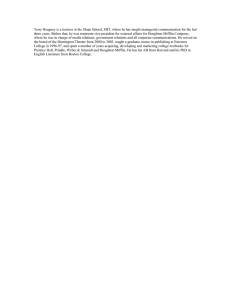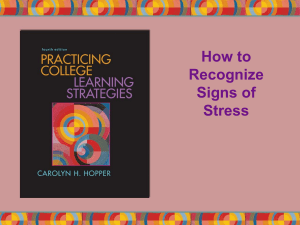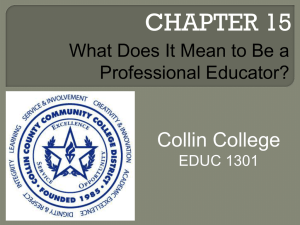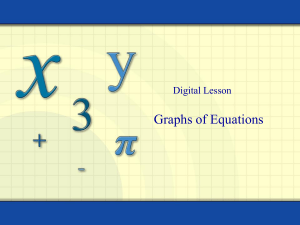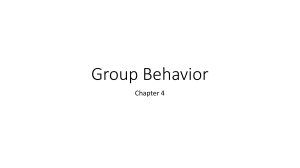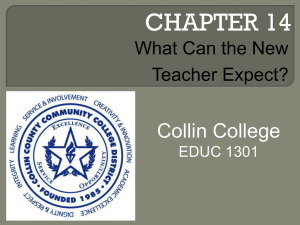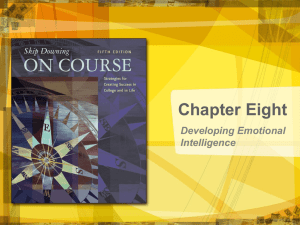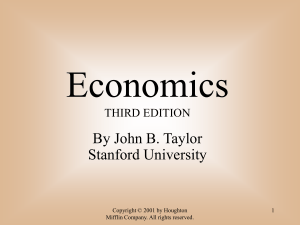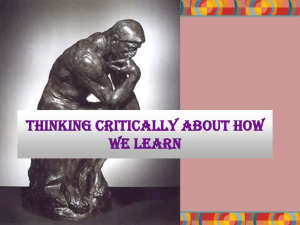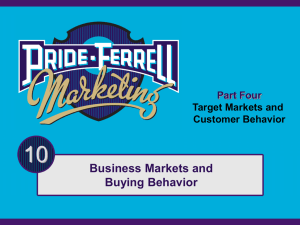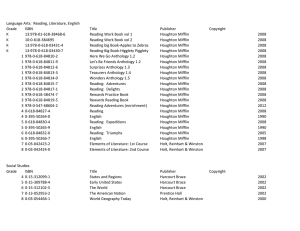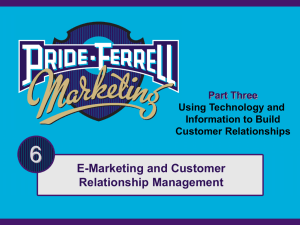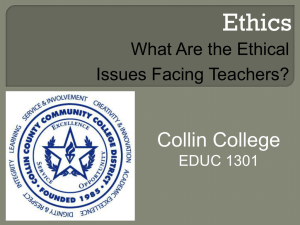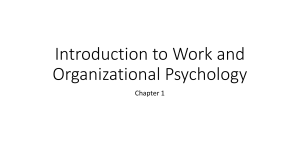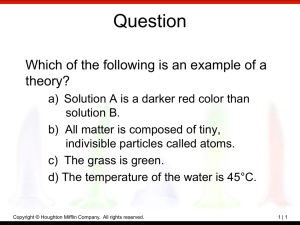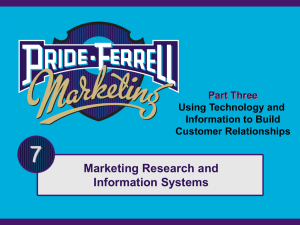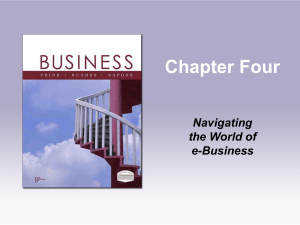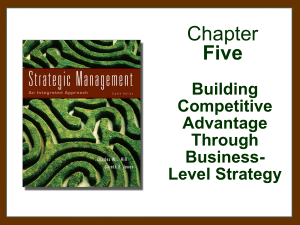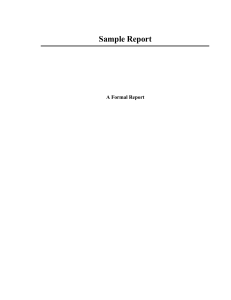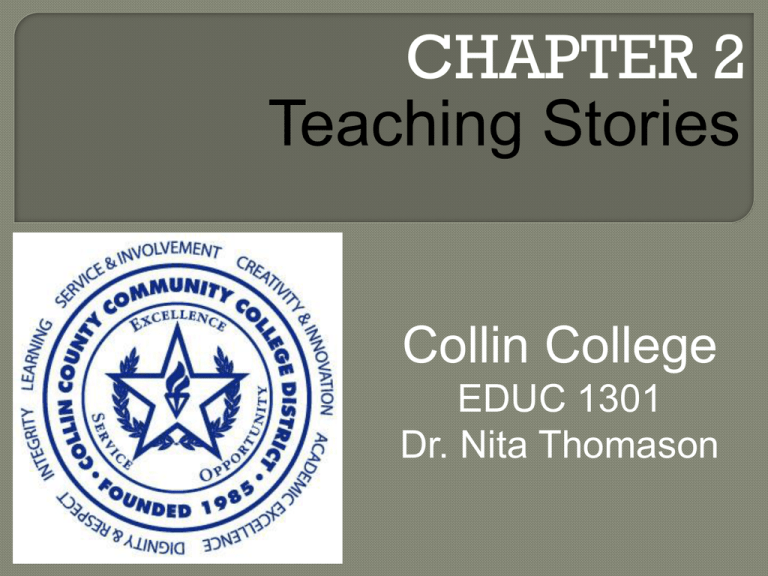
CHAPTER 2
Teaching Stories
Collin College
EDUC 1301
Dr. Nita Thomason
Female: 70 %
Caucasian: 87%
Married: 73%
Under age 30: 10%
Ages 30-39: 21%
Ages 40-49: 27%
Ages 50 and over: 42%
Master’s degree or
higher: 60%
.
Teacher
workforce doesn’t match the
growing diversity of the student body;
More
men are teaching than were 5 years
ago;
More
teachers have at least a Masters
degree today than they did 5 years ago.
Beliefs
about what is right and wrong,
good and bad
Dominant ideas, stories and myths,
artistic works
Social habits and organizations
Language and the ways people use it in
relationship to one another
Copyright by Houghton Mifflin Company. All rights
reserved.
24
Intellectual
Purposes - “brainwork” and the
development of reason
Political and Civic Purposes - training
responsible, informed citizens
Economic Purposes - preparing future
workers
Social Purposes - “adapt the child to the
social milieu”
Can you provide examples of these purposes?
Copyright by Houghton Mifflin Company. All rights
reserved.
25
Developmental
Assets for Adolescents |
Search Institute
©2010 Cengage Learning.
All Rights Reserved.
Social
norms (or “culture”) of your
classroom and school taught through:
• Your interactions with students
• Communication of expectations regarding
student achievement & demeanor
• Your passion for teaching & learning
-Term coined by sociologist Phillip Jackson in 1968
What do you think are the
characteristics of schools deemed to
be “effective?
Class
brain-storming session
Vote on Top Ideas
Compare to Research Findings
Copyright by Houghton Mifflin Company. All rights
reserved.
28
Who
we are influences what we do
• A teacher who’s a musician might use music in
his lessons in ways you cannot, no matter how
much you wish you could;
• A teacher who loves sports may use local ball
games to make a point in class.
Colleagues
Mentors
(inc. your college professors)
Administrators
Students
Parents
Other community members
Listen
Reflect: Write
down what you learn about
your school, community in teaching diary
• Expectations
• Culture
• Ways to connect
Join
mentoring program
Goal: Acclimate
and help you become a
reflective teacher who responds to
students’ diverse cultural, social,
linguistic backgrounds
Program
generally offers:
• Mentor (trained master teacher)
• Weekly participant sharing meetings
Globalization
affects students & teachers
• Changing interests, access to information
• Teachers must constantly adapt, ask “what will
work best for these students today?”
“Learning
community”: Classroom(s)
or school organized to promote active
learning, collaboration between teacher
& students, sense that everyone is a
learner
Lifelong
improvement of skills,
knowledge
•
•
•
•
•
•
$
Advanced formal courses
“In-service” experiences
Personal reading, reflection, & analysis
Conferences
Membership in professional organization
Informal experiences (museums)
incentives for annual continuing
education offered in many districts
American
Federation of Teachers
National Education Association
National Assoc. for Ed. of Young Children
eduScapes
National Council for the Social Studies
National Council of Teachers of English
National Science Teachers Association
National Council of Teachers of
Mathematics
In
addition to our earlier thoughts:
• Self-reflection
• Good analytical skills
• Desire to be a lifelong learner
• Hard work and preparation
• Centered presence in classroom

